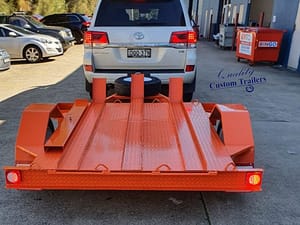In today’s fast-paced digital landscape, having a responsive wordpress web design sydney is no longer just an option—it’s a necessity. Responsive web design ensures that your website adapts seamlessly to different screen sizes, providing an optimal viewing experience whether your audience is using a desktop, tablet, or smartphone. This adaptability is crucial as more users are accessing the internet via mobile devices, and businesses that fail to provide a user-friendly mobile experience risk losing potential customers.
How Responsive Design Impacts Business Success
Responsive design directly influences key business metrics such as user experience, conversion rates, and search engine optimisation (SEO). A website that looks and functions well on all devices enhances user satisfaction, leading to longer visits and higher engagement. This positive user experience translates into improved conversion rates, as visitors are more likely to become customers when they can navigate your site easily.
Understanding Responsive Web Design
What is Responsive Web Design?
Responsive web design is an approach to web development that ensures a website’s layout adjusts dynamically according to the screen size and orientation of the device being used. This design strategy involves creating flexible grids, images, and CSS media queries that automatically reformat the content, so it remains user-friendly on any device. The goal is to provide a consistent and seamless experience, whether the user is viewing the website on a small smartphone screen or a large desktop monitor.
Key Elements of a Responsive Website
To achieve a responsive website, several key elements must be in place:
- Fluid Grids: These are grids that use relative units like percentages instead of fixed units like pixels to define the width of elements. This flexibility allows the layout to resize proportionally across different devices.
- Flexible Images: Images on a responsive website are set to scale within the constraints of their containers, ensuring they don’t overflow or become distorted when viewed on smaller screens.
- CSS Media Queries: Media queries allow you to apply different styles depending on the characteristics of the device, such as its screen width. This enables the website to adapt its layout and content to best fit the device being used.
The Role of Responsive Design in WordPress Development
Why WordPress is Ideal for Responsive Design
WordPress is a popular choice for developing responsive websites due to its flexibility and extensive range of themes and plugins designed specifically for responsiveness. Many WordPress themes come with built-in responsive features, meaning they automatically adjust layouts to fit various screen sizes. Additionally, WordPress plugins can further enhance a website’s responsiveness by adding features like mobile-friendly sliders, responsive menus, and more.
Best Practices in WordPress Development for Responsive Sites
To ensure your WordPress site is fully responsive, consider the following best practices:
- Choose a Responsive Theme: Start with a WordPress theme that is already designed to be responsive. This provides a solid foundation and saves time on custom coding.
- Utilize Responsive Plugins: Plugins like WPtouch and Jetpack can help enhance your site’s mobile performance. These plugins offer mobile-specific features and additional customization options to improve responsiveness.
- Optimise Images and Media: Use responsive images and ensure that your media files are optimized for different screen sizes. This not only improves load times but also enhances the user experience.
- Test on Multiple Devices: Regularly test your website on various devices and screen sizes to ensure consistency. Tools like Google’s Mobile-Friendly Test can help identify any issues that need addressing.
UI UX Design Principles in Responsive Web Design
Importance of UI UX Design in Responsiveness
UI UX design play crucial roles in ensuring that a responsive website provides an intuitive and enjoyable user experience. In responsive design, UI focuses on the layout, elements, and interactions that users engage with, while UX is concerned with the overall experience, including ease of navigation and user satisfaction.
Balancing Aesthetics and Functionality
A successful responsive website balances aesthetics with functionality. This means that while the design should be visually appealing, it must also be highly functional and user-friendly. In responsive design, this balance is achieved by:
- Prioritising Content: Ensure that the most important content is easily accessible on all devices. This may involve reordering content or simplifying the layout for smaller screens.
- Maintaining Visual Consistency: Use a consistent colour scheme, typography, and design elements across all devices to reinforce brand identity and provide a cohesive experience.
- Simplifying Navigation: Responsive design often requires simplifying navigation menus to make them more accessible on mobile devices. This could include using a “hamburger” menu or reducing the number of options displayed.
Testing and Optimising Your Responsive WordPress Website
Tools for Testing Responsiveness
Creating a responsive WordPress website is just the first step; testing its performance across different devices and screen sizes is crucial to ensure a consistent user experience. Various tools are available to help you evaluate and optimize your website’s responsiveness:
- Google Mobile-Friendly Test: This free tool allows you to check whether your website meets Google’s mobile-friendly criteria, which is essential for SEO and user experience.
- BrowserStack: A comprehensive testing tool that enables you to view your website on multiple devices and browsers, ensuring compatibility and performance across all platforms.
- Responsinator: This tool helps you visualize how your website looks on popular devices, making it easier to identify and fix any design issues.
Optimising for Different Devices
Ensuring that your WordPress website performs well on various screen sizes involves more than just making it look good—it’s about delivering a seamless experience regardless of the device. Here are some key considerations:
- Image Optimization: Compress images and use responsive image techniques (like
srcset) to ensure fast loading times on all devices. - Adaptive Content Delivery: Use CSS media queries to adjust content layout and presentation based on screen size, ensuring that your content is easily accessible on both large and small screens.
- Performance Tuning: Optimize your website’s code, including CSS, JavaScript, and other assets, to reduce load times and improve performance on mobile devices.
Common Challenges in Responsive Web Design
Addressing Load Time Issues
One of the most common challenges in responsive web design is ensuring that your website loads quickly on all devices, particularly mobile ones. Slow load times can frustrate users and lead to higher bounce rates. Here’s how to address this issue:
- Optimize Images: Large, unoptimized images are a major contributor to slow load times. Use tools like ImageOptim or TinyPNG to compress images without losing quality.
- Minify CSS and JavaScript: Remove unnecessary code, whitespace, and comments from your CSS and JavaScript files to reduce their size and improve load times.
- Implement Lazy Loading: Lazy loading ensures that images and other resources are only loaded when they are needed, which can significantly improve performance on mobile devices.
Overcoming Navigation Challenges
Creating a navigation system that works seamlessly across both desktop and mobile devices is another key challenge in responsive design. Here are some solutions:
- Simplified Menus: On mobile devices, consider using a “hamburger” menu or a simple dropdown to replace complex navigation structures that work well on desktops.
- Sticky Navigation Bars: Keep navigation bars fixed at the top of the screen, so users can easily access them even as they scroll down the page.
- Touch-Friendly Elements: Ensure that buttons, links, and other interactive elements are large enough and spaced appropriately for touch interactions on mobile devices.
The Impact of Responsive Design on SEO
How Google Prioritizes Mobile-Friendly Sites
Google’s mobile-first indexing means that the search engine predominantly uses the mobile version of a website’s content for indexing and ranking. This makes responsive design critical for SEO success:
- Mobile-First Indexing: Google favors websites that are mobile-friendly, which means having a responsive design directly impacts your search engine rankings.
- Improved User Experience: A responsive design leads to a better user experience, which in turn reduces bounce rates—a factor that Google considers in its ranking algorithm.
Ensuring your website is mobile-friendly is not just about meeting user expectations; it’s also crucial for maintaining and improving your search engine rankings.
Boosting SEO through Responsive WordPress Development
Responsive design contributes to higher search rankings in several ways:
- Unified URL Structure: With a responsive design, your website has a single URL for both desktop and mobile versions, which simplifies your SEO efforts and avoids duplicate content issues.
- Faster Load Times: As mentioned earlier, faster load times improve user experience, which is a ranking factor in Google’s algorithm.
- Reduced Bounce Rate: A well-designed, responsive website encourages users to stay longer, explore more, and engage with your content, leading to a lower bounce rate and higher search rankings.
Conclusion
The Future of Responsive Web Design
Responsive web design is continuously evolving, with new trends and technologies shaping the way websites are built. Some emerging trends include:
- Mobile-First Design: Designing with mobile users as the primary focus, rather than adapting desktop designs for mobile.
- Progressive Web Apps (PWAs): Combining the best of web and mobile apps, PWAs are becoming a popular choice for businesses looking to provide a seamless user experience.
- Voice Search Optimization: With the rise of voice-activated devices, optimizing your website for voice search is becoming increasingly important.
Why Responsive Design is Non-Negotiable
In today’s digital environment, responsive design is no longer an optional feature—it’s a fundamental requirement for any successful website. Whether you’re a small business or a large enterprise, investing in responsive web design is essential for staying competitive, improving user experience, and boosting SEO performance.







